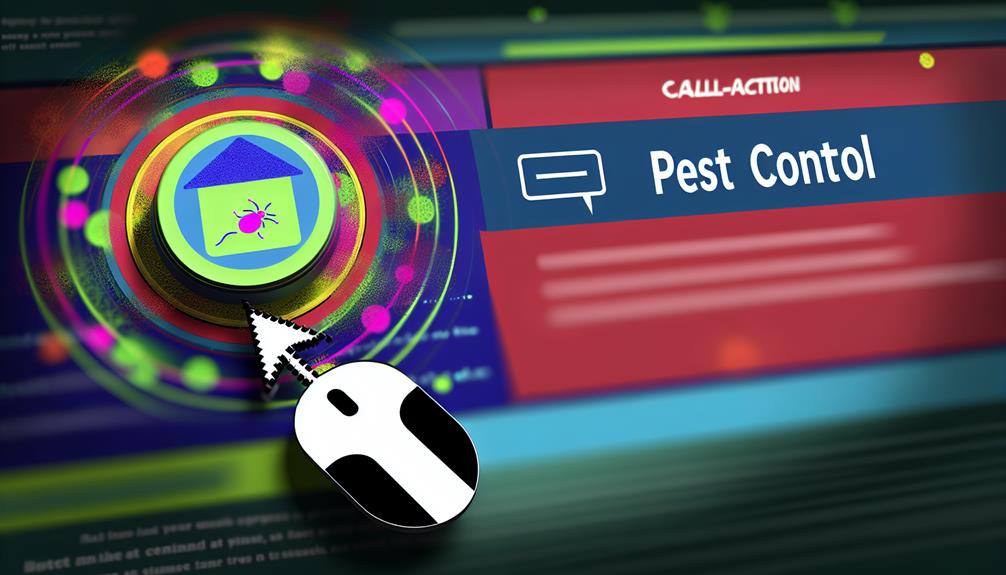Do you ever wonder why some pest control email campaigns are more effective than others?
Well, it turns out that there are three strategies that can make a significant difference in the success of your campaign.
By implementing targeted audience segmentation, crafting compelling email content, and incorporating an effective call-to-action, you can greatly improve your chances of engaging with your audience and achieving your desired outcomes.
But how exactly do these strategies work?
Let’s explore each one in detail and discover how they can help you maximize the impact of your pest control email campaigns.
Table of Contents
ToggleKey Takeaways
- Implement targeted audience segmentation techniques to reach the right people at the right time
- Craft compelling email content that is personalized and tailored to specific groups based on demographic and behavioral data
- Use attention-grabbing subject lines and clear call-to-action to increase engagement and prompt immediate action
- Maximize the impact of pest control email campaigns by incorporating all three strategies: targeted audience segmentation, compelling email content, and effective call-to-action.
Targeted Audience Segmentation

To optimize the effectiveness of your pest control email campaign, it’s crucial to segment your audience strategically. By implementing targeted audience segmentation techniques such as demographic targeting and behavioral segmentation, you can ensure that your emails are reaching the right people at the right time, increasing engagement and ultimately driving conversions.
Demographic targeting involves dividing your audience based on characteristics such as age, gender, location, and income level. This allows you to tailor your email content to specific groups, ensuring that your message resonates with them. For example, if you offer pest control services for residential properties, you might want to target homeowners in a specific area who are more likely to require your services.
On the other hand, behavioral segmentation focuses on the actions and behaviors of your audience. By tracking their interactions with your emails, website, and social media platforms, you can gain valuable insights into their preferences and interests. This information can then be used to create targeted campaigns that speak directly to their needs. For instance, if a subscriber has shown interest in your rodent control services, you can send them emails specifically related to that topic, increasing the chances of conversion.
Compelling Email Content
Crafting compelling email content is essential to capturing the attention of your audience and driving them to take action. When it comes to pest control email campaigns, there are a few strategies you can use to make your content more engaging and persuasive:
- Email personalization: Personalizing your emails with the recipient’s name or other relevant information can make them feel more valued and increase their likelihood of opening and engaging with your message. Use email marketing software that allows you to easily insert personalized fields into your emails.
- Subject line optimization: Your subject line is the first thing your audience sees, so it needs to be attention-grabbing and compelling. Experiment with different subject lines to see which ones generate the highest open rates. Consider using tactics like posing a question, creating a sense of urgency, or offering a solution to a common pest problem.
- Compelling call-to-action: Your email content should include a clear and compelling call-to-action that tells your audience what you want them to do next. Whether it’s scheduling a pest inspection, signing up for a newsletter, or taking advantage of a limited-time offer, make sure your call-to-action stands out and is easy to follow.
Effective Call-to-Action

Make your call-to-action stand out by using clear and compelling language that prompts your audience to take immediate action.
When it comes to creating an effective call-to-action (CTA) in your pest control email campaigns, there are a few key strategies you can employ to increase engagement and drive conversions.
First, start with attention-grabbing subject lines. Your subject line is the first thing your audience sees in their inbox, so it needs to capture their attention and entice them to open the email. Use action-oriented language and create a sense of urgency to pique their curiosity.
Next, personalize and customize your CTAs. Tailor your call-to-action to match your audience’s specific needs and preferences. Use their name, location, or previous interactions with your brand to make the CTA feel more relevant and personalized. By doing so, you can increase the chances of them taking the desired action.
Lastly, make your CTA clear and easy to follow. Use concise and straightforward language that leaves no room for confusion. Use action verbs that prompt immediate action, such as ‘Buy Now’ or ‘Schedule an Appointment.’ Keep your CTA visible and prominent in your email design, ensuring that it stands out and catches the reader’s eye.





